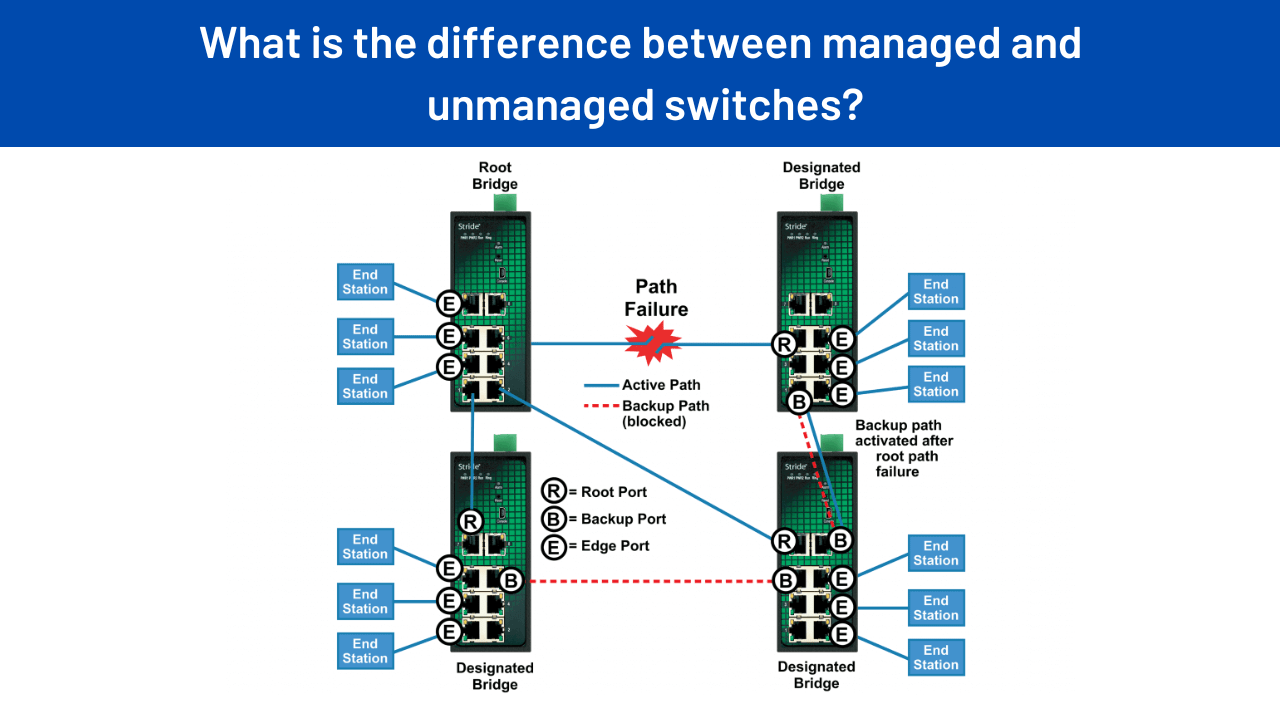In the realm of networking, switches play a pivotal role in facilitating communication within a local area network (LAN). Two primary categories of switches that cater to different needs and functionalities are managed switches and unmanaged switches. Understanding the distinctions between these two types is crucial for optimizing network performance, security, and overall efficiency.
1.Definition and Basic Functionality:
- Unmanaged Switches: Unmanaged switches are the simpler of the two types, designed for basic plug-and-play functionality. These switches operate without the need for manual configuration, making them user-friendly and suitable for small-scale networks. They forward data to connected devices without any intervention or monitoring.
- Managed Switches: Managed switches, on the other hand, offer a higher degree of control and customization. Network administrators can configure these switches to meet specific requirements, such as controlling bandwidth, monitoring traffic, and implementing security features. Managed switches provide a more sophisticated and flexible solution for larger and more complex networks.
2.Network Control and Configuration:
- Unmanaged Switches: Unmanaged switches are essentially “set and forget” devices. They lack a user interface and do not allow for configuration. While this simplicity can be advantageous for plug-and-play setups, it limits the control and visibility that network administrators have over the network.
- Managed Switches: Managed switches come equipped with a user interface or command-line interface (CLI) that enables administrators to configure various settings. This includes Quality of Service (QoS) prioritization, VLAN (Virtual Local Area Network) segmentation, and monitoring features. The ability to customize these settings allows for a more optimized and secure network environment.
3.Scalability and Performance:
- Unmanaged Switches: Allen Bradley Stratix 2000 8T Port Unmanaged Switch are suitable for smaller networks with a limited number of devices. As the network expands, unmanaged switches may struggle to handle the increased traffic and lack the necessary features for efficient management.
- Managed Switches: Managed switches are highly scalable and can accommodate the growth of a network. With features like link aggregation, which combines multiple ports for increased bandwidth, and advanced management capabilities, these switches are well-suited for larger and more complex infrastructures.
4.Security Features:
- Unmanaged Switches: Unmanaged switches generally lack advanced security features. They operate on a “flat” network, where all devices share the same broadcast domain. This simplicity may leave the network more vulnerable to unauthorized access and potential security threats.
- Managed Switches: Managed switches offer a range of security features, including access control lists (ACLs), port security, and VLAN segmentation. These features enhance network security by restricting access to specific devices, monitoring traffic patterns, and isolating segments of the network.
5.Cost Considerations:
- Unmanaged Switches: Unmanaged switches are typically more budget-friendly, making them an attractive choice for small businesses or home networks with straightforward requirements. They provide a cost-effective solution for basic connectivity needs.
- Managed Switches: Managed switches come with a higher upfront cost due to their advanced features and capabilities. However, for organizations with evolving networking needs or stringent security requirements, the long-term benefits in terms of performance and security may justify the initial investment.
In summary, the choice between managed and unmanaged switches depends on the specific needs and scale of the network. Unmanaged switches are ideal for smaller, straightforward setups where simplicity and cost-effectiveness are priorities. In contrast, managed switches offer a more sophisticated and customizable solution, catering to larger networks that require enhanced control, security, and scalability. Ultimately, understanding the differences between these two types of switches empowers network administrators to make informed decisions based on their organization’s unique requirements.
Asteam Techno Solutions Pvt. Ltd is a commercial and service company specializing in the comprehensive services for our customers, as well as supply of difficult to obtain industrial automation spare parts. We provide everything that our clients need with reduced time of preparing quotations to the absolute minimum. Due to our extensive expertise working with both local and international suppliers, we are able to provide the highest-quality items at low costs. We specialize in deliveries of the following brands: Allen Bradley, Schneider Electrics, Omron, Siemens, Phoenix Contact, Moxa, Vipa and many more.



